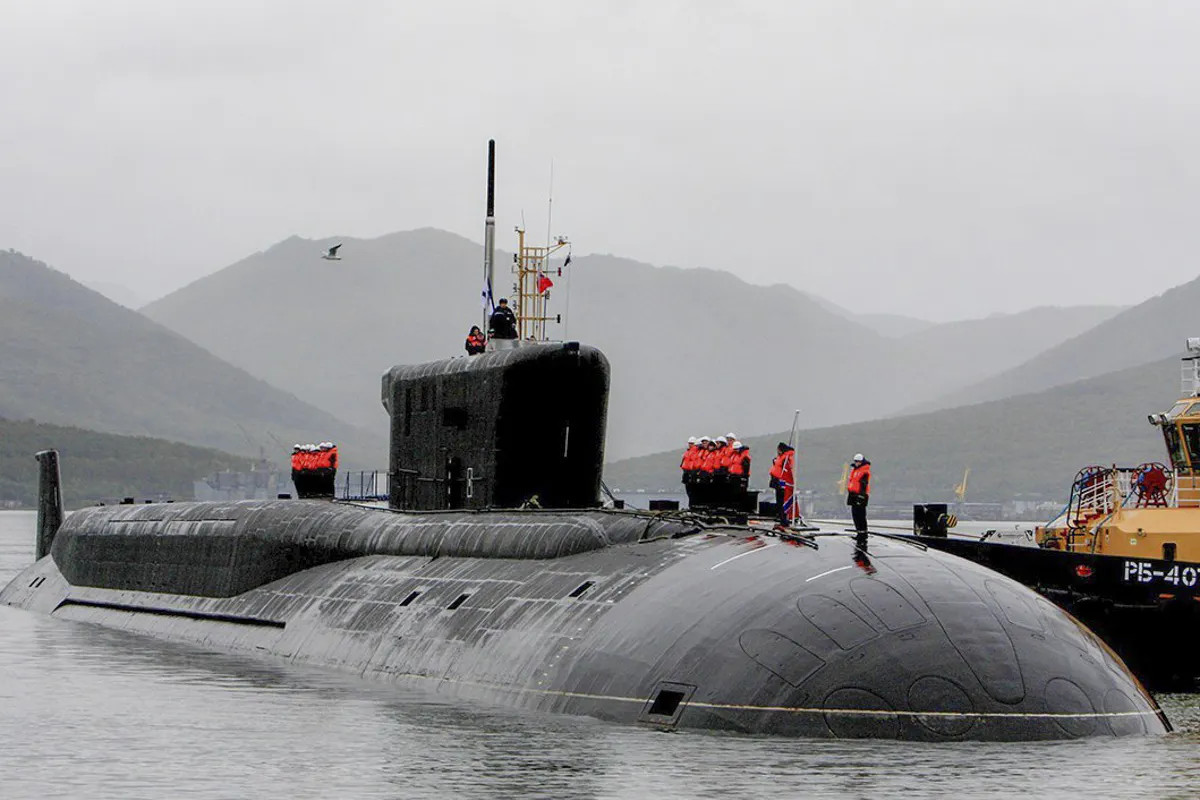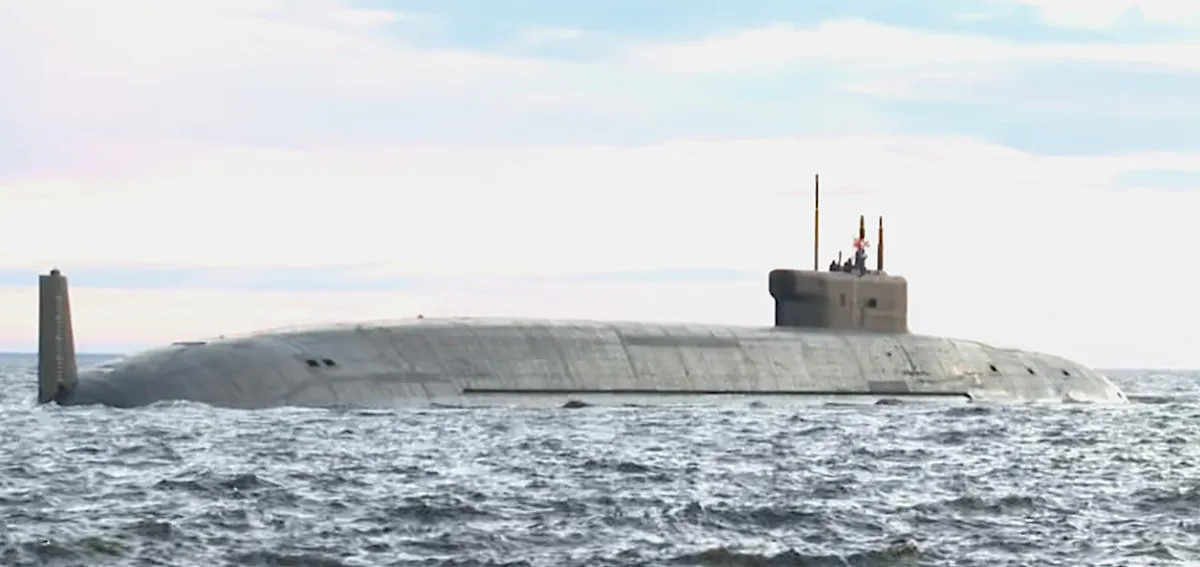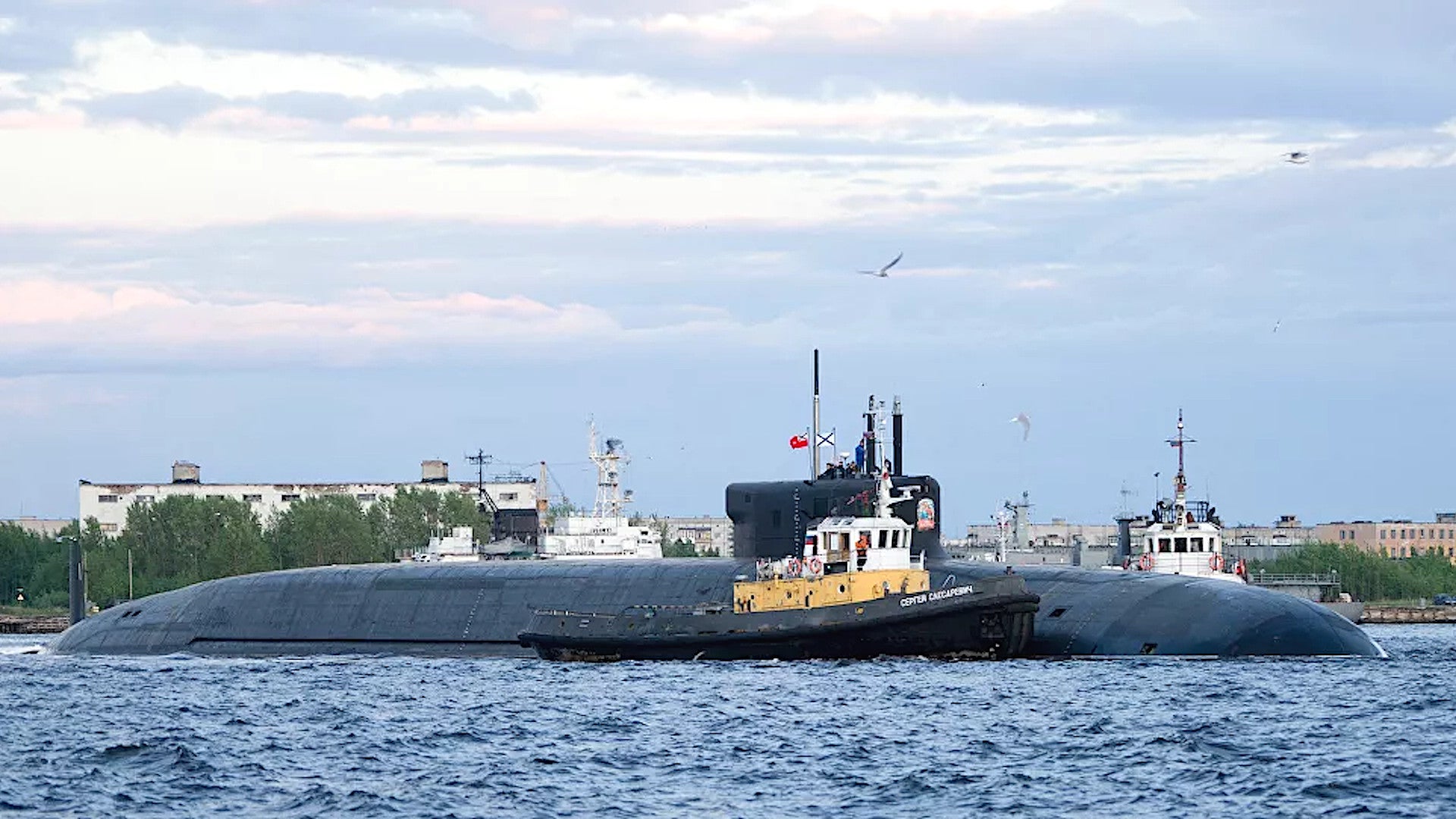The Russian Navy’s newest ballistic missile submarine, the Project 955A Borei-A class Knyaz Vladimir, has headed out for its “final” sea trials, indicating that it could finally enter service in the near future. The boat was originally set to formally join Russia’s Northern Fleet back in 2017, but that schedule repeatedly slipped due to technical issues.
On May 13, 2020, the official press service the Russian Navy’s Northern Fleet announced that Knyaz Vladimir, or Prince Vladimir in English, had left port in Severodvinsk and was headed into the White Sea. The sea trials will last “several days” and will include activities with the boat running on the surface, as well as submerged, according to the press release.
“During the trials, the quality of the removal of problems exposed earlier will be checked, after which the term for including the new vessel into the structure of the Northern Fleet’s submarine forces will be set,” the release added, according to a rough translation from Russian state-run media outlet TASS.
The Russian Navy presently has three Project 955 Borei class submarines in active service, the first of which entered service in 2013. The Borei class traces its roots back to the latter years of the Soviet Union and the construction of the first of those boats, the Yury Dolgorukiy, first started way back in 1996. The aftermath of the fall of the Soviet Union, especially the impacts on Russia’s economy, contributed to the delays in finishing that particular submarine and starting to build additional boats in the class.

The initial Boreis are already some of the most advanced submarines Russia operates and were the first boats in the country’s navy to feature a pump-jet propulsion system. Enclosed pump-jet propulsors offer significant benefits, especially in how quiet they are under certain circumstances, compared to traditional exposed screws, capabilities that you can read about in more detail in this past War Zone piece.
Being as quiet as possible is essential for the survival of any submarine and is particularly important for the Boreis, which are a key component of Russia’s second-strike nuclear deterrent. The Project 955 submarines are also the first and so far only ones in the Russian Navy to carry the new RSM-56 Bulava nuclear-armed submarine-launched ballistic missile operationally. Russia’s sole remaining Typhoon class submarine Dmitriy Donskoi was involved in testing the RSM-56.

The boats in the improved Project 955A Borei-A subclass, of which Knyaz Vladimir is the first example, are said to be even more advanced. The new submarines are significantly different externally from their predecessors, notably in the streamlining of the hull to remove a box-like superstructure around the missile tubes and the revised shape of the sail. The rudders and vertical endplates are also updated. All of these features make the submarine more efficient and maneuverable above and below the waves and helps reduce its acoustic signature even more.
The Borei-As also feature pop-out auxiliary thrusters for additional power at low speeds, where the pump-jet propulsion systems are not as capable. This will help the submarines be able to efficiently cruise very quietly at low speeds, which will further help keep them concealed and ensure their ability to retaliate during a nuclear confrontation. The boat’s pump-jet is less efficient at slower speeds, making the auxiliary thrusters an especially important feature.
Beyond these structural and propulsion features, the Project 955As also have upgraded communications and sonar suites, as well as a variety of amenities for their crews, including a banya, or sauna. You can read all about this unique feature and the other improvements to the Borei-A class in this past War Zone piece.

The scope of the differences between the Boreis and the Borei-As has been a contributing factor in the difficulties in getting Knyaz Vladimir into service. Russia laid down the submarine in 2012, but only launched it in 2017, the same year the Kremlin had originally expected it to go to the Northern Fleet.
It’s planned commission date has been pushed back every year since then. Most recently, it was reported that it would enter service in January, which came and went.
Dips in Russia’s economy in recent years have often prompted the cancellation or indefinite delay of major defense programs. Last month, it emerged that the Kremlin had completely abandoned plans for huge new nuclear-powered destroyers and supersized frigates in no small part due to financial constraints. The COVID-19 pandemic, which has further depressed the global price of oil, a key source of income for Russia, will only increase pressure on the country’s budgets.
At the same time, the Kremlin has made clear that it views modernizing its strategic arsenals as a critical expenditure and defense budget cuts have often gone to preserving those programs. The Borei-As, three more of which are under construction now and two more of which are supposed to get laid down this year, are certainly an important part of revitalizing the Russian Navy’s strategic submarine forces. The bulk of the country’s ballistic missile submarines are Soviet-era Delta III and Delta IV class types, also known as Project 667BDRs and 667BDRMs respectively, which first entered service in the 1980s.
The Russian Navy clearly hopes that Knyaz Vladimir is now conducting its last sea trials before commissioning. It should become obvious relatively soon whether or not the first Borei-A is finally set to enter service or will need more work.
Contact the author: jtrevithickpr@gmail.com
